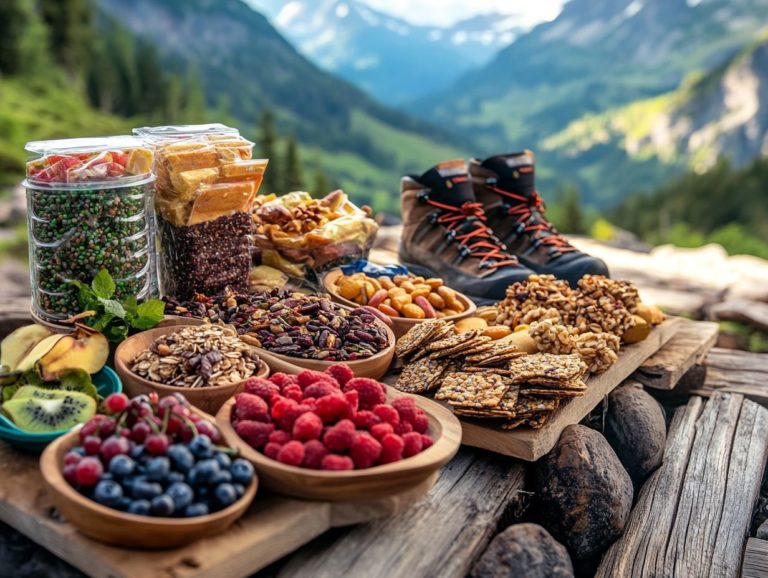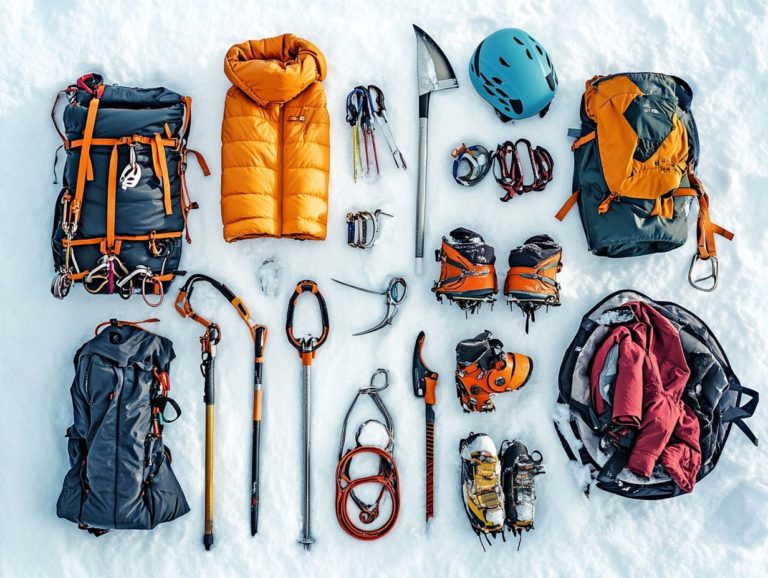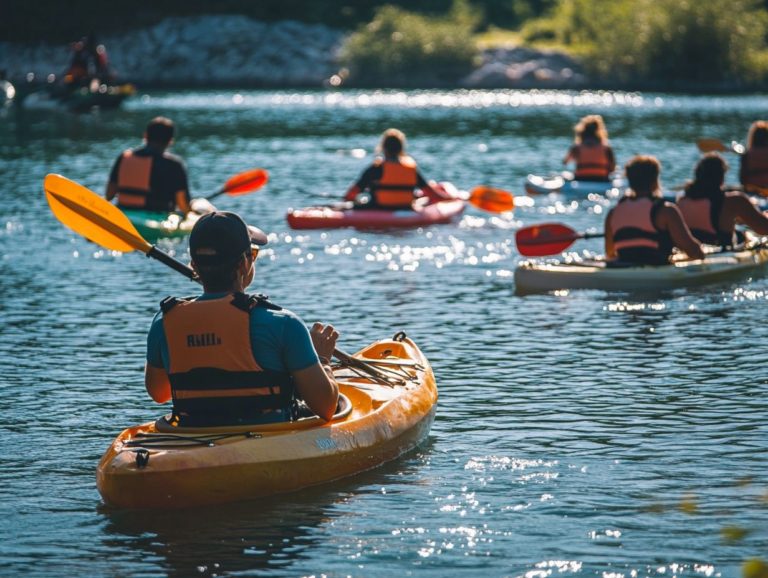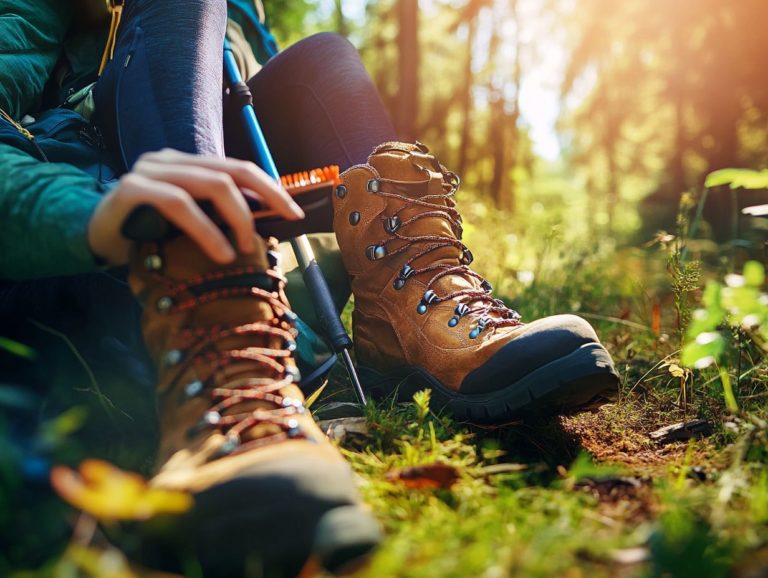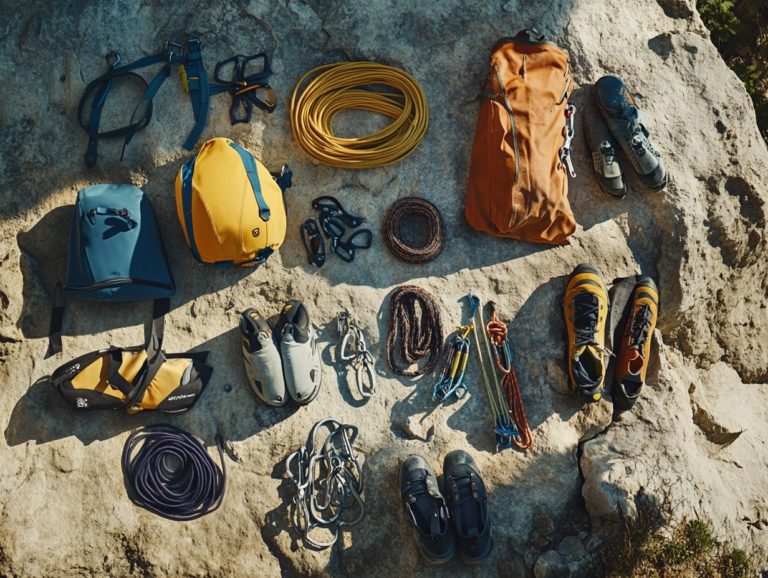How to Prepare Survival Gear for Emergencies?
In an unpredictable world, being prepared for emergencies can make all the difference. A preparedness checklist is a vital tool in your journey to safety.
Whether it’s natural disasters, unexpected crises, or everyday situations, understanding potential risks and having the right survival kit and emergency essentials at your disposal can significantly enhance your safety and well-being.
This guide will walk you through the essentials of emergency preparedness, from pinpointing vital survival items to crafting a personalized evacuation plan for various scenarios.
You ll find tips on storage and maintenance, plus other strategies to ensure you re ready for whatever life throws your way, fostering self-reliance and peace of mind.
Contents
- Key Takeaways:
- The Importance of Emergency Preparedness
- Essential Survival Gear to Have
- How to Choose and Store Survival Gear
- Creating a Survival Plan
- Practicing and Maintaining Your Gear
- Additional Tips for Emergency Preparedness
- Frequently Asked Questions
- What is considered essential survival gear for emergencies?
- What should be taken into consideration when preparing survival gear for emergencies?
- How much water should be included in survival gear for emergencies?
- What types of food are best to include in survival gear for emergencies?
- Why is it important to have a first aid kit in emergency survival gear?
- What should be done with survival gear for emergencies if it is not used?
Key Takeaways:
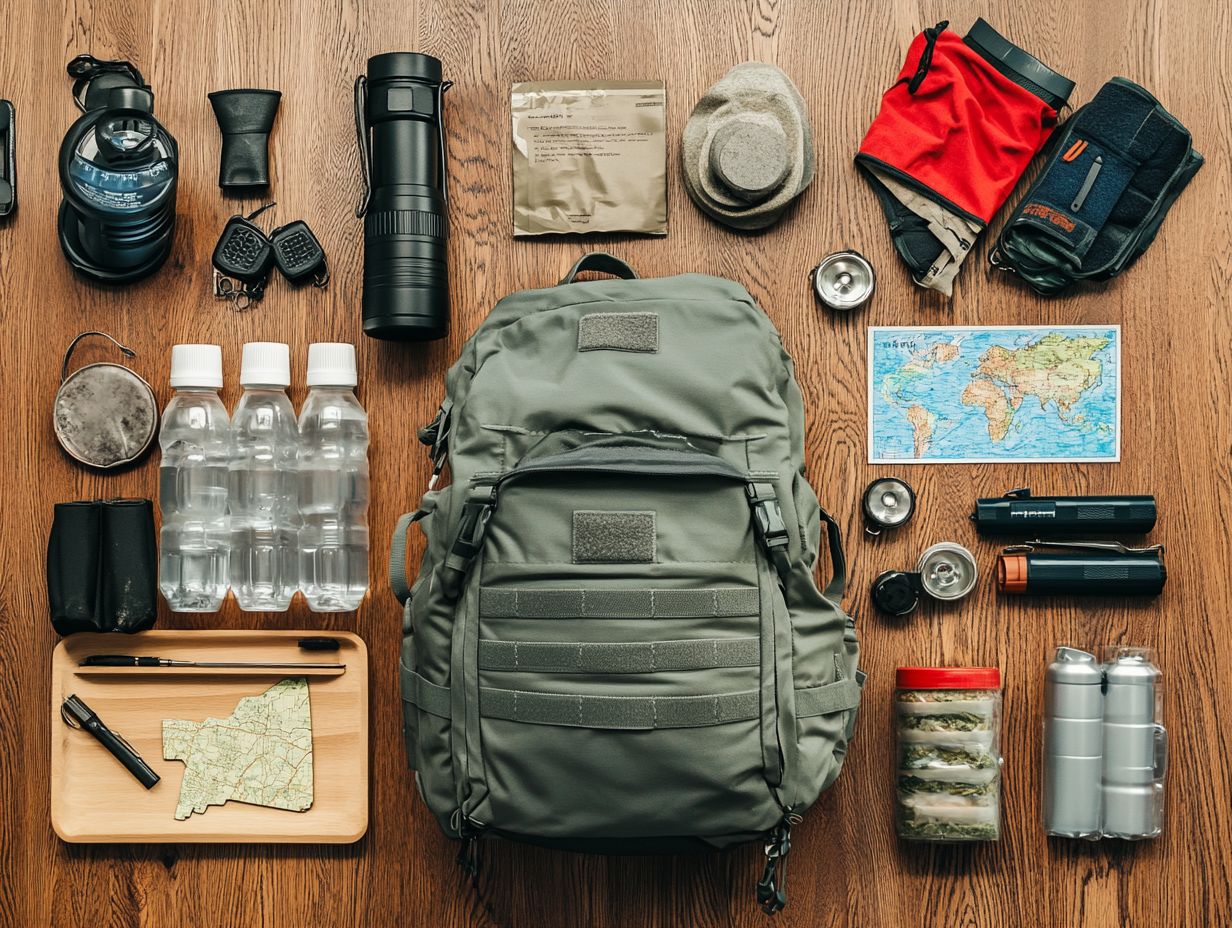
- Know the risks in your area to prepare effectively.
- Stock both basic and advanced items in your survival gear.
- Regularly check and practice with your gear to stay familiar with its use.
The Importance of Emergency Preparedness
Emergency preparedness is essential for safeguarding the safety and well-being of yourself and your family, especially in regions susceptible to natural disasters like Arizona, Florida, and Minnesota.
Being prepared involves recognizing potential risks, crafting a robust plan, and gathering essential supplies to navigate any emergency situation with confidence. A thorough approach to preparedness can greatly enhance survival rates during a disaster while providing the reassuring knowledge that you are equipped with the top survival tools for emergency preparedness to handle unforeseen challenges.
Understanding Potential Risks and Disasters
Understanding potential risks and disasters is crucial for your emergency preparedness, especially if you live in states like Arizona, Florida, or Minnesota, where various natural disasters can strike.
Each of these regions poses unique threats. For example, Arizona often confronts wildfires and dust storms, while Florida is notoriously vulnerable to hurricanes and tropical storms. Meanwhile, Minnesota faces challenges like severe winter blizzards and spring thaw flooding.
To effectively tackle these dangers, you should prioritize essential emergency supplies, such as:
- First aid kits
- Non-perishable food
- Water
- Flashlights
By staying prepared and informed about the specific risks in your area, you can significantly mitigate the impacts of these disasters and ensure your safety during unexpected emergencies. Additionally, knowing how to use hiking gear for survival can be invaluable, allowing you to rely on community resources as needed.
Essential Survival Gear to Have
Having the right survival gear, which includes essential tools and supplies, is crucial for navigating any emergency situation. Assembling an effective survival kit can offer invaluable support when disaster strikes.
Your essential survival gear should encompass a well-stocked first aid kit, non-perishable food, water purification systems, and safety equipment, ensuring you and your loved ones can sustain yourselves for at least three days post-emergency.
Don’t overlook hygiene products, emergency cash, and communication tools; these are essential for your kit and will cater to various personal needs while bolstering your overall preparedness.
Don’t wait until it’s too late! Start preparing your emergency kit today to ensure you’re ready when disaster strikes.
Basic and Advanced Items to Include
When you’re assembling an emergency essentials kit, you must include both basic supplies and advanced items tailored to your family’s unique needs and the potential emergencies you may face.
A well-rounded kit should encompass foods that won’t spoil, such as freeze-dried meals and energy bars. Along with a reliable water purification system, this will keep your hydration game strong. Don t forget clothing essentials like thermal blankets, sturdy footwear, and a weather-resistant jacket to ensure warmth and protection when it matters most.
For more advanced scenarios, incorporating medical supplies think of a comprehensive first aid kit, splints, and emergency medications is absolutely crucial. Tools like multi-tools, compasses, and portable solar chargers can elevate your survival skills in various emergencies.
Each of these items plays a vital role in guaranteeing safety and boosting your chances of navigating challenging situations effectively.
How to Choose and Store Survival Gear
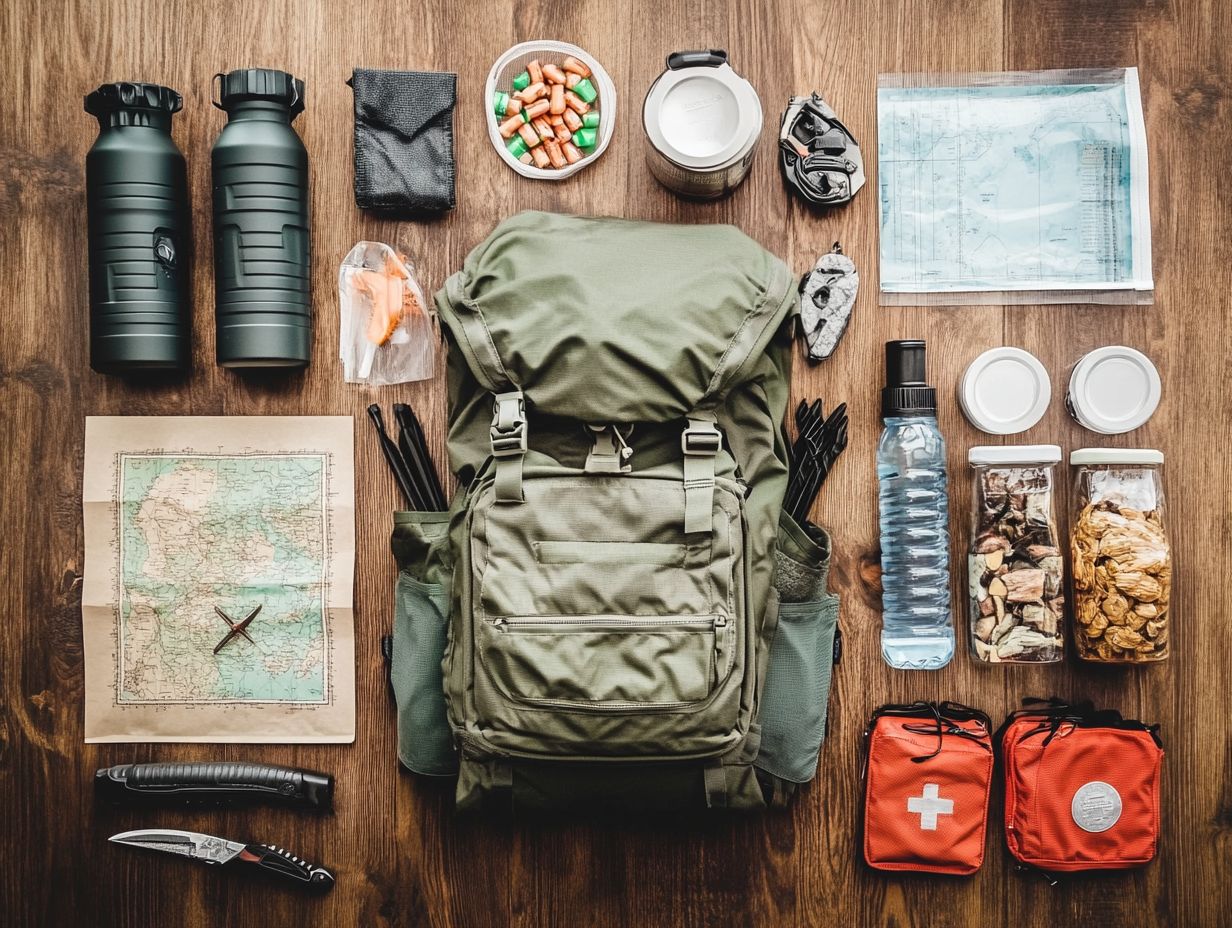
Choosing and storing survival gear effectively can truly elevate your preparedness for a range of emergency situations. When selecting your gear, consider the types of emergencies you might encounter, as well as the specific conditions and duration of those scenarios.
How you store your gear is equally important; ensure that items are kept in a cool, dry place, are easily accessible, and are organized for quick retrieval when the moment arises. This thoughtful approach can make all the difference in your readiness for whatever challenges may come your way.
Factors to Consider and Tips for Storage
When choosing and storing emergency essentials, consider several factors, including the types of potential disasters, the size of your family, and the unique needs of each family member.
Prioritize supplies based on regional risks. For example, if you live in a flood-prone area, flood kits should be at the top of your list. Those in tectonically active regions need to focus on earthquake preparedness kits.
Organizing your supplies by category like food, water, first aid, and tools can make access much more efficient during emergencies. Regularly checking expiration dates ensures that your food and medications are effective when it matters most.
Set reminders for periodic checks to keep everything organized and ensure that your items are always ready for action, providing you with peace of mind amid uncertainties.
Creating a Survival Plan
Crafting a comprehensive survival plan is vital for safeguarding your family in times of emergency. Your survival plan should detail an evacuation route, establish a communication strategy to keep in touch with family members, and assign specific roles for each individual during a crisis.
Familiarize yourself with local community resources, such as shelters and emergency services, to elevate your preparedness and ensure you re well-equipped for any situation.
Developing a Plan for Different Scenarios
When developing a survival plan, consider various emergency scenarios that might impact your area, such as hurricanes, wildfires, or medical emergencies. Each type of disaster presents its own unique challenges, so tailoring your emergency plan accordingly is crucial.
For instance, when anticipating a hurricane, identify safe evacuation routes and local shelters before an emergency strikes. Planning for a wildfire may require you to create defensible space around your home and organize an emergency go-bag.
Don’t forget the specific needs of your family members, including medical requirements, age, and mobility issues. Ensuring that everyone is prepared and safe in various emergency situations is paramount.
By assessing these factors and weaving them into a comprehensive plan, you can navigate the complexities of unexpected scenarios with confidence and clarity.
Practicing and Maintaining Your Gear
Practicing and maintaining your survival gear is essential for ensuring you’re thoroughly prepared for any emergency situation that may arise. Regular maintenance checks and practice drills are vital; they help your family members become familiar with the emergency equipment and procedures, fostering both confidence and competence in effectively navigating a crisis.
These activities also create an opportunity to evaluate the condition of your gear, ensuring that all essential items are in working order and easily accessible when you need them most.
Regular Maintenance and Drills for Preparedness
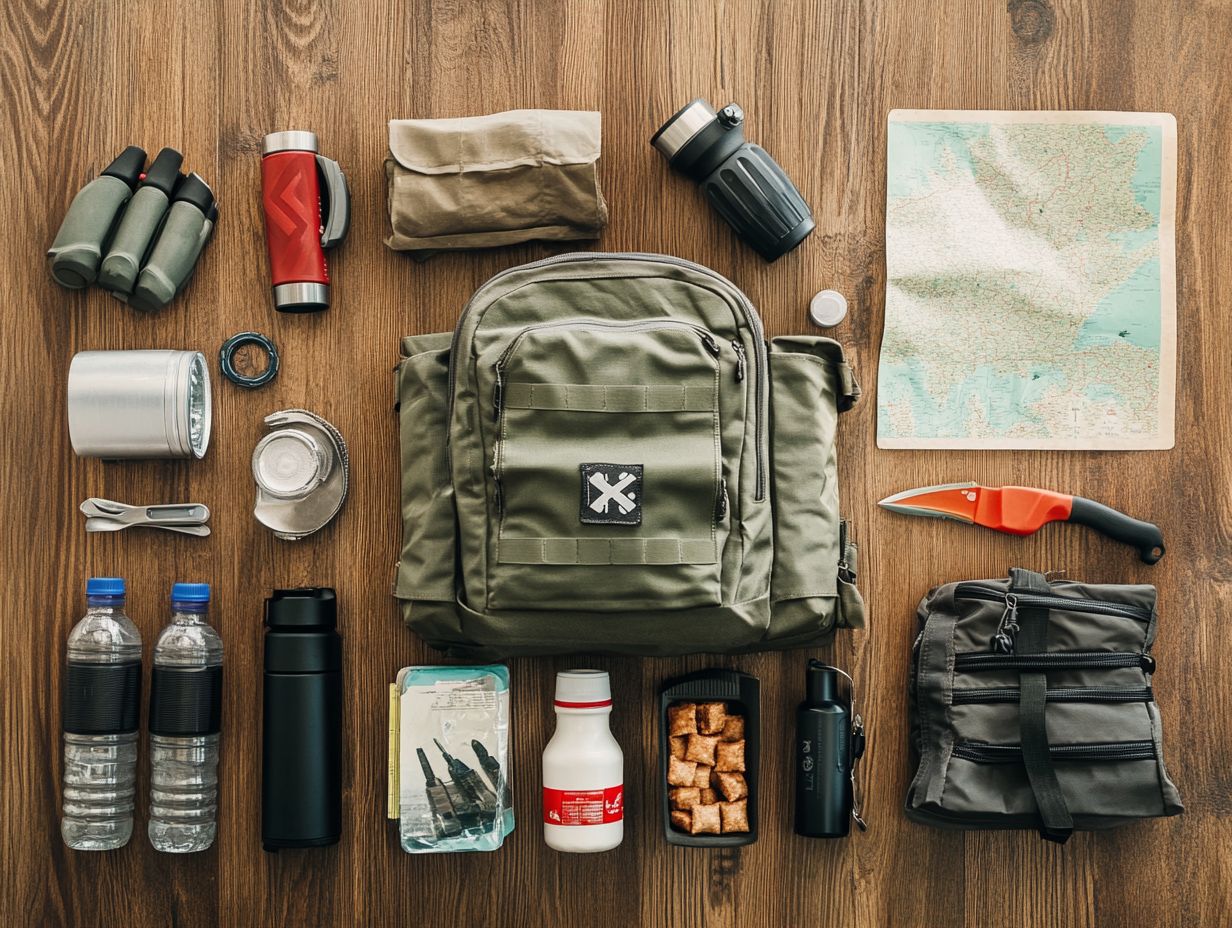
To ensure you re fully prepared, it s essential to regularly maintain your emergency gear and conduct drills with your family these practices should never be overlooked.
Checking expiration dates on supplies like non-perishable food and batteries is crucial to ensure that your resources are effective when you truly need them, especially during medical emergencies. Inspecting your first aid kits to replenish items such as antiseptics, bandages, and medications is vital.
Testing flashlights and other equipment helps you find faulty parts before disaster strikes. Engaging in periodic drills strengthens your emergency protocols, allowing your family to practice evacuation routes and communication strategies.
This not only builds confidence but also ensures everyone is ready should an actual emergency arise. By prioritizing these maintenance tasks and drills, you can significantly enhance your overall preparedness for any unexpected situation. Don t wait! Start your first drill today to boost your family’s confidence!
Additional Tips for Emergency Preparedness
In addition to having a solid survival plan and the right gear, you can elevate your emergency preparedness with several key strategies that can truly make a difference in a disaster.
Ensuring easy access to your personal documents, keeping an updated list of emergency contacts, and including hygiene items in your survival essentials are all essential elements of a thorough preparedness plan.
Advice for Staying Safe and Prepared in Any Situation
Staying safe and prepared in any situation calls for smart planning and a firm commitment to regularly reviewing and updating your emergency preparedness measures.
This approach ensures that your readiness evolves alongside your changing personal needs and circumstances. For example, you might find it advantageous to periodically assess your home environment, pinpointing potential hazards and crafting tailored ways to reduce risks.
Utilizing community resources such as local emergency services, neighborhood watch programs, and educational workshops can significantly bolster your personal safety. Engaging with community organizations often provides crucial information on emergency protocols and the support networks available to you.
By fostering a culture of awareness and cooperation, you can face unforeseen challenges with greater ease, transforming preparedness from a personal responsibility into a shared community endeavor.
Frequently Asked Questions
Got questions about survival gear? Here are some answers to help you prepare.
What is considered essential survival gear for emergencies?
Some essential survival gear for emergencies includes water, non-perishable food, first aid kit, multi-purpose tool, flashlight, and shelter materials. These items can help you stay hydrated, fed, and protected in case of an emergency.
What should be taken into consideration when preparing survival gear for emergencies?
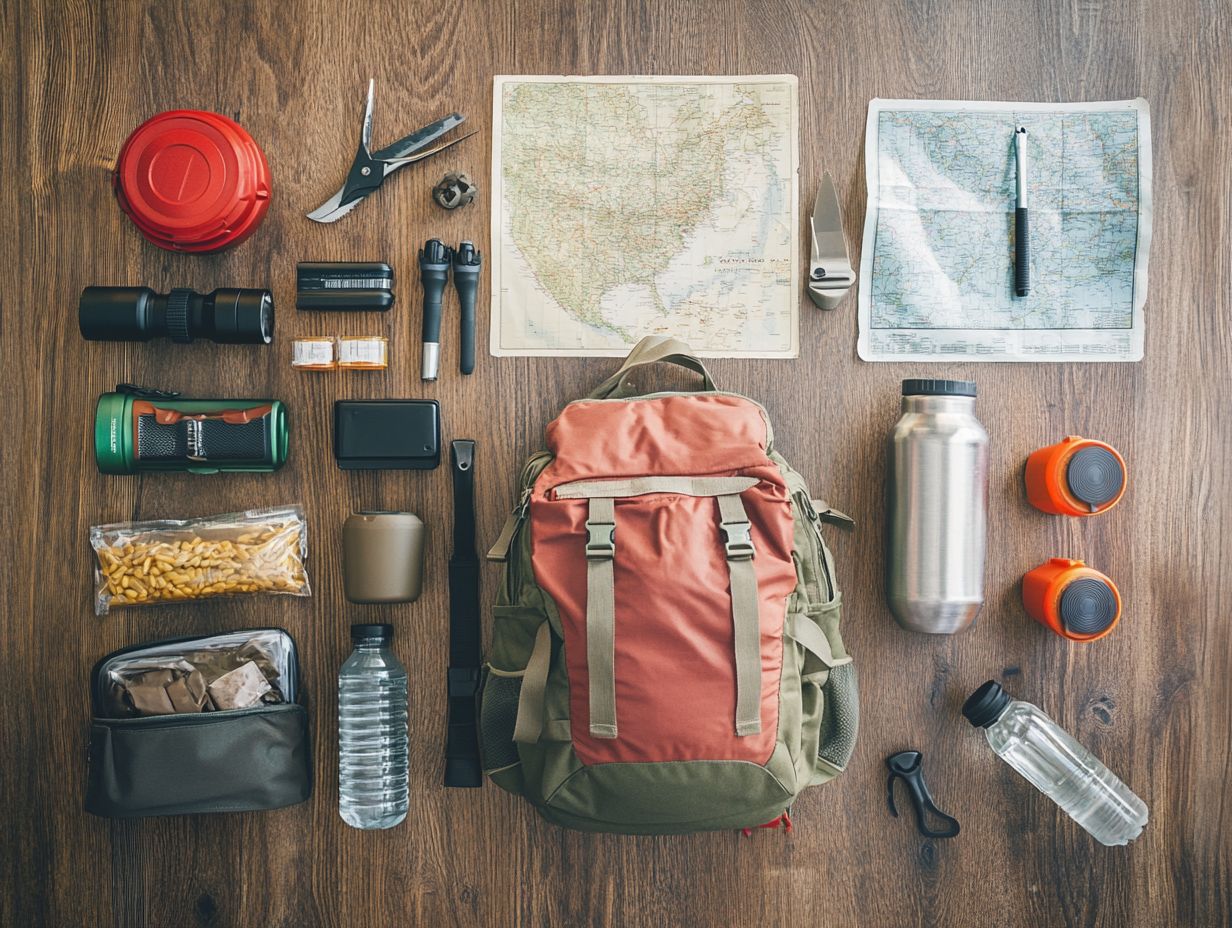
When preparing survival gear for emergencies, it is important to consider the location, climate, and potential hazards of where you will be using the gear. This will help you determine what specific items to include in your kit.
How much water should be included in survival gear for emergencies?
The general rule of thumb is to have at least one gallon of water per person per day for a minimum of three days. However, it is recommended to have more if possible, especially in hot or dry climates.
What types of food are best to include in survival gear for emergencies?
Foods that won t spoil and give you lots of energy, like protein bars, dried fruit, nuts, and canned goods, are great choices for survival gear. Always check expiration dates and rotate your food to keep it fresh.
Why is it important to have a first aid kit in emergency survival gear?
A first aid kit is a must-have for emergencies! It helps treat minor injuries and keeps them from becoming serious. Don’t forget to include any necessary medications and personal hygiene items.
What should be done with survival gear for emergencies if it is not used?
Regularly check and maintain your survival gear, even if you haven t used it. This ensures everything is in top shape and ready to go when you need it.

